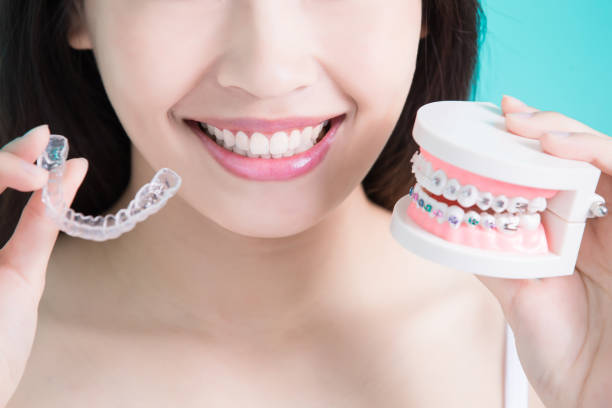Understanding Orthodontic Braces Treatment: A Comprehensive Guide
Orthodontic braces treatment has become increasingly popular in recent years, as more individuals seek to achieve the perfect smile. Whether for cosmetic reasons or to address functional dental issues, braces play a crucial role in orthodontics, a branch of dentistry dedicated to diagnosing, preventing, and treating dental and facial irregularities. This article will explore the various aspects of orthodontic braces treatment, including its types, benefits, process, and aftercare.
What Are Orthodontic Braces?
Orthodontic braces are dental devices designed to correct misaligned teeth and jaws. They work by applying gentle pressure to the teeth over time, gradually shifting them into their desired positions. Braces can be used to treat a variety of dental issues, such as overcrowding, gaps between teeth, overbites, underbites, and crossbites.
Types of Orthodontic Braces
There are several types of orthodontic braces available, each with its unique advantages and features:
- Metal Braces: The most traditional type of braces, metal braces consist of stainless steel brackets and wires. They are durable, effective, and typically the most affordable option. Metal braces are often chosen for their reliability and strength.
- Ceramic Braces: Made from clear or tooth-colored materials, ceramic braces are less noticeable than metal braces. They function similarly to metal braces but are a popular choice among adults and teens seeking a more discreet option. However, ceramic braces may be more fragile and require more care.
- Lingual Braces: Lingual braces are placed on the back of the teeth, making them invisible from the front. This option is ideal for individuals who want to maintain a natural appearance during treatment. However, they can be more challenging to clean and adjust.
- Clear Aligners: Brands like Invisalign offer clear plastic aligners that are custom-made to fit over the teeth. These aligners are removable, making them a convenient option for those who want flexibility in their treatment. They are also less visible than traditional braces, making them a popular choice for adults.
- Self-Ligating Braces: These braces use a special clip instead of elastic bands to hold the wire in place, allowing for easier adjustments and less friction. They can be made from metal or ceramic and are designed to reduce treatment time.
Benefits of Orthodontic Braces Treatment
Investing in orthodontic braces treatment offers numerous benefits beyond aesthetic improvements:
- Improved Oral Health: Straightening teeth makes them easier to clean, reducing the risk of cavities and gum disease. Proper alignment can also help prevent excessive wear on tooth surfaces.
- Enhanced Functionality: Correcting bite issues can improve chewing and speaking abilities, making everyday activities more comfortable and effective.
- Boosted Confidence: A straight, healthy smile can significantly enhance self-esteem, positively impacting social and professional interactions.
- Long-term Investment: Addressing dental issues early on can prevent more serious problems in the future, saving time and money on extensive dental work.
The Orthodontic Treatment Process
The process of getting orthodontic braces typically involves several steps:
- Initial Consultation: During the first visit, the orthodontist will assess the patient’s dental health and discuss their goals. X-rays, photographs, and impressions of the teeth may be taken to create a personalized treatment plan.
- Treatment Plan Development: Based on the assessment, the orthodontist will develop a detailed treatment plan, including the type of braces recommended and the estimated duration of treatment.
- Fitting the Braces: Once the treatment plan is approved, the braces will be fitted. This process usually takes about 1-2 hours and involves bonding brackets to the teeth and threading the archwire through them.
- Regular Adjustments: Patients will need to return to the orthodontist every 4-8 weeks for adjustments. During these visits, the orthodontist will tighten the wires or replace the elastics, gradually moving the teeth into the desired position.
- Retention Phase: After the braces are removed, a retention phase begins. This involves wearing a retainer to help maintain the teeth’s new positions. The duration of retainer wear varies depending on individual needs.
Aftercare and Maintenance
Proper aftercare is crucial for the success of orthodontic braces treatment. Here are some essential tips for maintaining oral health during and after treatment:
- Maintain Oral Hygiene: Brushing and flossing regularly are vital to prevent plaque buildup around the braces. Using a soft-bristle toothbrush and interdental brushes can help clean hard-to-reach areas.
- Follow Dietary Recommendations: Certain foods, such as hard candies, popcorn, and sticky snacks, can damage braces. It’s essential to follow your orthodontist’s dietary guidelines to protect the braces and ensure effective treatment.
- Attend Follow-up Appointments: Keeping up with regular orthodontic appointments is vital for monitoring progress and making necessary adjustments.
- Wear Retainers as Directed: After braces removal, wearing retainers as instructed by the orthodontist is crucial for maintaining the new position of the teeth.
Conclusion
Orthodontic braces treatment is a valuable solution for individuals seeking to improve their dental alignment and overall oral health. With various options available, patients can find a treatment plan that suits their needs and lifestyle. By understanding the process and committing to aftercare, individuals can enjoy the long-term benefits of a beautiful, healthy smile. If you’re considering orthodontic treatment, consult a qualified orthodontist to explore your options and start your journey toward a confident smile.














Post Comment